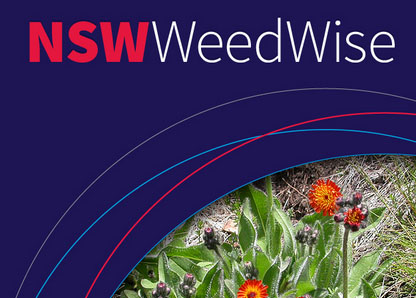Weeds are just one of a number of threats impacting on Australia's natural environment. In the last 200 years vast areas of native vegetation have been cleared or degraded, resulting in adverse effects on biodiversity, soil and water quality and assisting in the spread of weeds, feral pests and diseases.
Ecological systems are complex, with many factors being influenced by changing climate and land management practices. Weeds are both impacting on and being impacted on by factors such as land clearing, drought, fire and climate change.
Land management practices
Land management practices that clear native vegetation or degrade its condition favour weeds by: providing opportunities for them to colonize new areas and reducing the ability of native vegetation to compete with and suppress invading species.
Land clearing, habitat fragmentation and over-grazing are examples of land management practices that adversely affect biodiversity and at the same time can benefit weeds. Prevention and early detection are important strategies to reduce weed spread.
Extreme events such as droughts, floods and cyclones
Extreme events including droughts, floods and cyclones can sometimes create ideal conditions for weeds to extend their range and invade new areas or out-compete native species in their existing range.
Dry soil conditions caused by drought prolong the longevity of weed seed banks; and importing fodder and grain into drought areas can bring new weed problems to the region. Drought can reduce the competitiveness of native vegetation, providing new opportunities for weed invasion.
Floods can spread weeds along watercourses into areas that were previously free of weeds. By washing away vegetation and exposing areas of disturbed soil, floods can also provide opportunities for new weed invasions by reducing competition from existing plants.
Fire
The interaction between fire management and weed management is a complex one. Some weeds are sensitive to fire, where fire can be lethal or can suppress growth. Other weeds can actually benefit from fire where fire reduces competition and produces an environment in which the weed can spread rapidly. In these cases the new flush of weed growth following a fire can add to the available fuel load for future fires, potentially creating a cycle of high-fuel, intense burns followed by a period of immense weed growth.
Because of the wide range of interactions weeds and fire can have, the coordination of fire and weed management is complex. In particular, the use of fire as a weed control method needs careful research and planning.
Climate change
The characteristic of weeds to be able to respond rapidly to disturbances such as climate change, may give them a competitive advantage over less aggressive species. The impacts of climate change on single species and ecosystems are likely to be complex. Climate change, as well as the interactions between climate change and other processes (such as changes to land use and to fire regimes), may also turn some currently benign species (both native and non-native) into invasive species and may lead to sleeper weeds becoming more actively weedy.
Climate change is expected to increase the risk of invasion by weeds from neighbouring territories. Climate change may also favour weeds that have already established in Australia but are currently restricted in range, enabling them to increase their range. As climatic zones shift, weeds that are capable of rapid dispersal and establishment have the potential to invade new areas and increase their range.
Weeds that are well-suited to adapt to the impacts of climate change may not only fill gaps left by more vulnerable native plants, they may have an even greater effect by altering the composition of ecosystems and their integrity. In fact, climate change may favour certain native plants to such an extent that they then become weeds.

